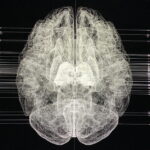Continuing with my exploration of ambiguous personal narratives, the work of Francis Bacon seemed a clear artist with which to draw connections between identity and mysterious narratives, due to his common theme of distortion in portraiture. Bacon uses abstracted shapes and bold brush strokes to manipulate facial features in his portraits. In turn, this creates the effect of malformed and confused emotions within his subjects, which, in a similar way to Diebenkorn, encourage the viewer to create their own vision of the subject’s identity and personal narrative. Below are some examples of Bacon’s work which effectively encourage the audience to conjure a narrative for the subject from their imagination.
This thought process therefore, can be said to manipulate the title of this project, ‘Making and Breaking Narrative’, by encouraging the audience to create their own narrative after being presented with a broken, incomplete or ambiguous identity within a portrait.


![]()






